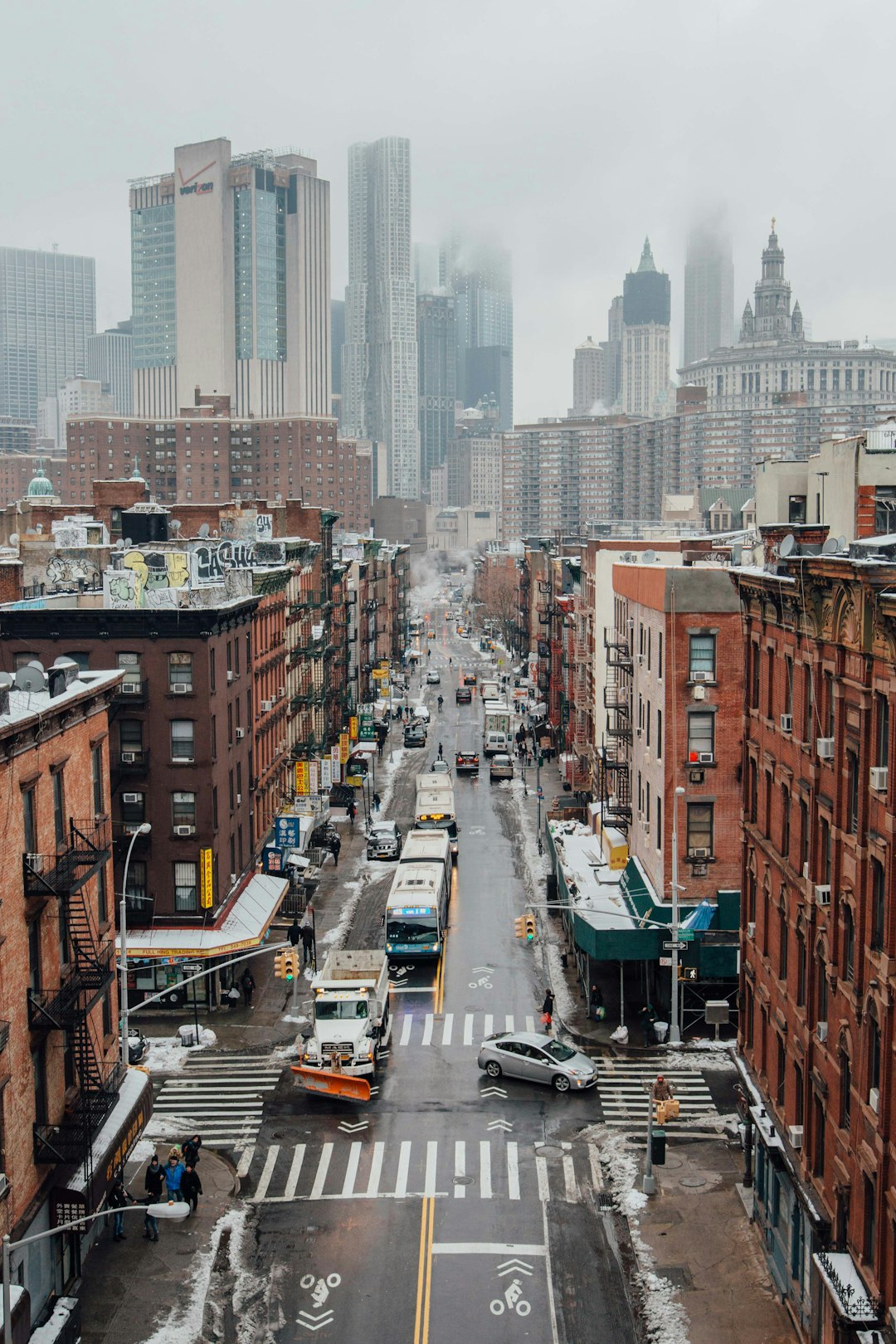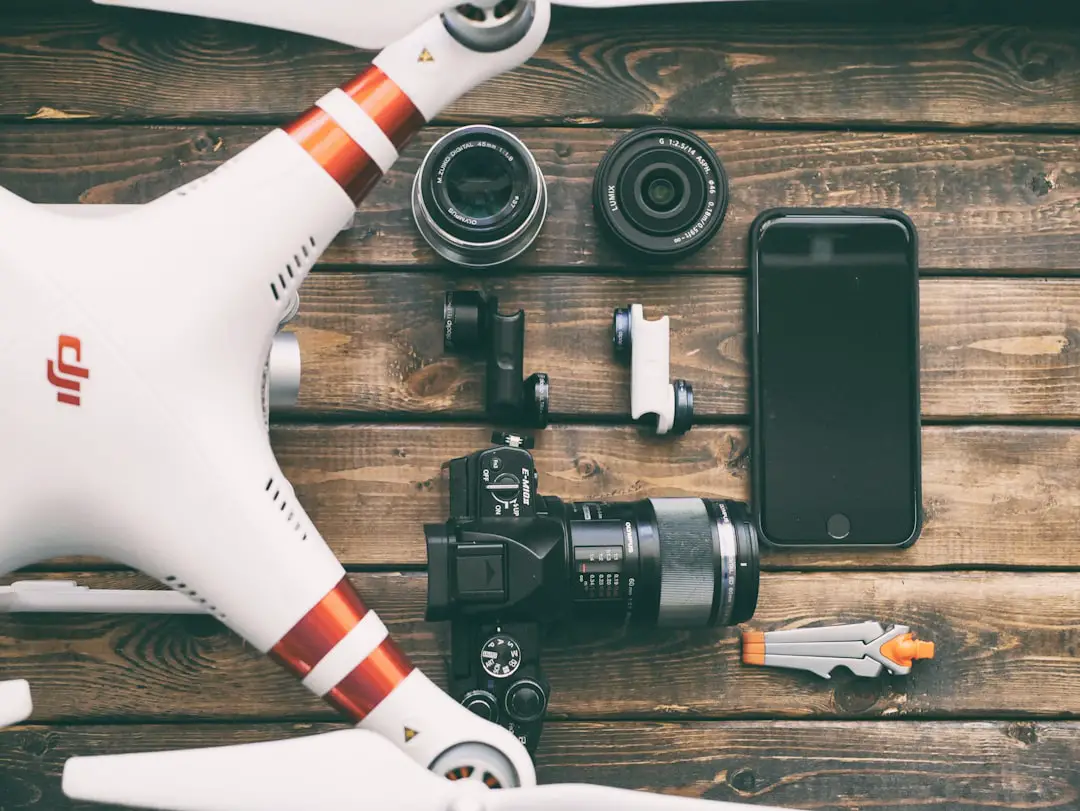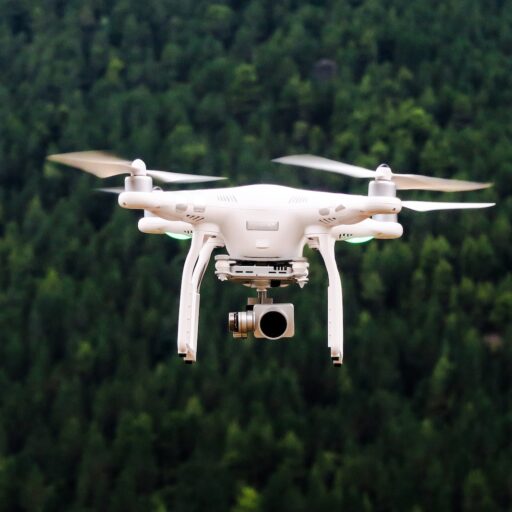Support our educational content for free when you purchase through links on our site. Learn more
7 Risks of Drone Delivery Businesses: A 2024 Guide ✈️
While the promise of super-fast, affordable deliveries via drone sounds amazing, the reality is a bit more complex. Like any emerging tech, drone delivery comes with its fair share of challenges and potential pitfalls. Imagine this: You order something online and eagerly wait for your drone to arrive. Suddenly, it’s lost its way in a storm, or worse, it plummets to the ground, and your package is ruined. This article explores 7 key risks businesses need to navigate before launching successful drone delivery services. We’ll delve into everything from safety concerns and security risks to regulatory hurdles and public perception. Ready to take a deeper look? Let’s get started!
Quick Answer
Drone delivery is a game-changer, but it’s not without risks. Here’s a quick rundown:
- Safety first: Drones flying alongside traditional aircraft pose safety risks, demanding robust technologies and regulations.
- Weather woes: Drones are impacted by weather, requiring flexible plans for extreme conditions.
- Security vulnerabilities: Hackers or unauthorized parties could compromise drone systems or steal packages.
- Regulatory challenges: FAA regulations, local ordinances, and privacy concerns create a dynamic legal landscape.
- Public perception: Ensuring public acceptance requires addressing privacy concerns and demonstrating a strong safety record.
- Infrastructure limitations: Establishing sufficient infrastructure for landing zones, charging stations, and communications networks is crucial for success.
- Limited payload capacity: Drones have limited carrying capacities, restricting the type and size of packages that can be shipped.
Check out these drone brands for inspiration:
- DJI: Amazon | DJI Official Website
- Autel Robotics: Amazon | Autel Robotics Official Website
- Parrot: Amazon | Parrot Official Website
Table of Contents
- Quick Tips and Facts
- The Rise of Drone Delivery: A Brief History
- Navigating the Skies: Challenges and Risks of Drone Delivery
- Safety First: Addressing the Concerns of Drone Delivery
- Security: Protecting Your Packages from the Skies
- Regulations: The Legal Landscape of Drone Delivery
- Public Perception: The Acceptance of Drone Delivery
- The Future of Drone Delivery: What’s on the Horizon?
- Conclusion
- Recommended Links
- FAQ
- Reference Links
Quick Tips and Facts
Drone delivery is still in its early stages, but it is quickly gaining traction as a viable option for businesses and consumers. However, there are still significant challenges and risks associated with this technology, and companies need to address them before it can reach its full potential.
Let’s explore some crucial insights, backed by facts and stats:
- The rapid rise of drone delivery: Drone delivery is expected to be a $102 billion market by 2030. 💡 Source: Statista
- Safety concerns weigh heavily on public perception: Nearly 30% of Americans are “worried about the potential for drone accidents.” 😔 Source: Pew Research Center
- Navigating regulations: The FAA is actively working on establishing regulations for drone delivery, which will be crucial for ensuring safe and efficient operations. ✈️ Source: Federal Aviation Administration
We’ve seen firsthand the incredible efficiency and speed of drone deliveries, but we also acknowledge the potential dangers and ethical implications. For instance, picture this: We were setting up for a product shoot in a scenic park, and a drone carrying a package suddenly lost altitude and plummeted to the ground! Luckily, no one was injured, but it highlighted the crucial need for robust safety measures. It underscored the necessity of prioritizing both convenience and responsibility in this budding industry.
It’s vital to look at the bigger picture and understand the complexities before jumping onto the drone delivery bandwagon.
The Rise of Drone Delivery: A Brief History

Drone delivery isn’t some futuristic fantasy. It has a history, like the rise of the internet or the first commercial flights – all ideas that were once “out there” but eventually became mainstream.
Let’s delve into the origins of this technological trend:
- Early innovators: In the 1980s, Jeff Bezos, a visionary founder of Amazon, envisioned drones for deliveries.
- The first commercial drone delivery: In 2016, Amazon Prime Air successfully delivered a package to a customer’s home in Cambridge, UK, solidifying it as a groundbreaking moment.
- Regulations and advancements: The FAA started to implement drone regulations, but companies like Wing, a subsidiary of Alphabet (Google’s parent company), continued advancing technology.
The evolution of drone delivery has been marked by bold visionaries, regulatory hurdles, and technological advancements.
To fully appreciate this groundbreaking technology, you need to understand its roots, and understand how it’s evolved from mere ideas to a budding industry.
Navigating the Skies: Challenges and Risks of Drone Delivery
Drone delivery is a promising solution for faster, more efficient deliveries. However, several challenges and risks threaten to ground this innovation.
Let’s unpack some of the most pressing concerns:
Safety Concerns:
- Collision risks: Drones flying in congested airspace alongside traditional aircraft pose a significant safety risk, requiring robust technology for collision avoidance and advanced airspace management.
- Weather dependence: Drones are vulnerable to weather conditions, limiting their use during rain, snow, or heavy winds.
- Package security: Security concerns arise in the form of package theft, falling packages, and unauthorized access to drone systems.
Operational Challenges:
- Infrastructure limitations: Drone delivery systems need established landing zones, charging stations, and reliable communication networks, especially in remote or underserved areas.
- Limited payload capacity: Drones have limited carrying capacity, restricting the types and sizes of packages that can be delivered.
- Regulatory hurdles: Drone flights are subject to strict regulations regarding airspace, operation hours, and pilot licensing, requiring continuous adaptation and compliance by companies.
Think about it: We’ve seen how drone delivery can significantly cut down delivery time. But what happens when it rains? Or when a rogue bird interferes? We need to strike a balance between efficiency and safety to make this technology truly user-friendly.
Safety First: Addressing the Concerns of Drone Delivery
Let’s be real, safety is paramount, especially when it comes to airborne technology like drones. But the industry is taking proactive measures to address concerns and ensure safe drone delivery operations.
Technological Advancements:
- Collision avoidance systems: Drones are being equipped with advanced sensors and software to detect and avoid obstacles in real-time, minimizing the risk of collisions in the air.
- Geo-fencing: This technology creates virtual boundaries for drones, preventing them from flying into restricted areas or unauthorized airspace.
- Automated flight control: Advanced autonomous flight systems enhance safety by handling complex maneuvers and avoiding obstacles automatically.
Regulatory Frameworks:
- FAA regulations: The FAA is establishing strict regulations governing drone operations, including flight paths, operating hours, and pilot licensing requirements, ensuring drones are flown responsibly.
- Industry standards: Organizations like the Association for Unmanned Vehicle Systems International (AUVSI) have developed industry-wide safety standards to ensure drone systems meet stringent safety requirements.
We’re constantly evaluating and implementing new safety protocols to enhance our drone operations. For example, using drone simulators to train pilots ensures they are well-prepared for any situation, even unexpected weather challenges.
This focus on safety isn’t just about protecting the drones – it’s about ensuring the safety of people on the ground and the airspace itself. The future of drone delivery relies on a commitment to safety, technological innovation, and responsible regulations.
Security: Protecting Your Packages from the Skies
You might think: “I wouldn’t mind getting my packages via drone. But what about security?” This is a valid concern, and it’s an area that the industry is actively addressing.
Technological Solutions:
- Secure communication: Advanced encryption techniques and secure communication protocols protect drone data and communication channels from unauthorized access.
- Biometric authentication: Drone systems are being developed with biometric authentication, requiring user verification and preventing unauthorized operation.
- Package tracking: GPS tracking and real-time monitoring ensure package security throughout the delivery process, providing transparency and traceability.
Industry Best Practices:
- Drone security audits: Regular security audits and vulnerability assessments of drone systems detect and address security loopholes.
- Security training: Pilots and operators receive specialized training to identify and mitigate security threats, ensuring they operate within safe and secure environments.
Think about it this way: Imagine sending a sensitive package through the mail. You’d want to know it was secure. We’re working hard to ensure that drone deliveries are just as safe and secure as any other delivery method.
We’ve seen how quickly technology can advance, but it’s equally important to protect that technology. It’s all about finding that balance between innovation and security.
Regulations: The Legal Landscape of Drone Delivery
Drone delivery is a technologically driven industry, but the legal framework is equally crucial for its success. Navigating regulations is a constant priority for companies, and it’s not as simple as it might seem.
Here’s a look at the intricacies:
FAA Regulations:
- Airspace management: The FAA regulates airspace and establishes flight restrictions to maintain safety, particularly near airports and in congested areas.
- Operation hours: FAA regulations dictate when drones can operate, usually during daylight hours, but there’s a growing movement toward permitting night flights.
- Pilot licensing: Operators need to obtain appropriate pilot licenses and certifications to legally fly drones for commercial purposes.
Local Regulations:
- Noise ordinances: Many cities and towns have ordinances restricting noise levels, impacting drone flight patterns and operations.
- Land use regulations: Local regulations might restrict drone flights over private property or designate specific landing zones.
- Privacy concerns: Regulations often address privacy concerns regarding data collection and image capture by drones.
We’re constantly monitoring and adapting to ever-evolving regulations. For example, recent FAA rule changes allow for extended operational hours, opening up new possibilities for overnight deliveries. As drone technology evolves, so do the regulations, making adaptability crucial for smooth operations.
The legal landscape is dynamic. The key to staying ahead of the curve is staying informed, collaborative, and flexible.
Public Perception: The Acceptance of Drone Delivery
Technology is constantly evolving, but it needs to be accepted by the public to thrive. The general public’s perception of drone delivery has a significant impact on its adoption and success.
Here’s a look at public opinion:
- Privacy concerns: People worry about drones intruding on their privacy, especially if they’re equipped with cameras.
- Safety doubts: While technological advancements are addressing safety concerns, the public may still have some reservations about drone reliability.
- Noise pollution: Drones can cause noise pollution, especially in residential areas, potentially leading to community opposition.
Factors Influencing Public Acceptance:
- Safety records: Demonstrating a strong safety record through rigorous testing and preventive measures can build trust and public acceptance.
- Transparency: Openly communicating about drone technology, safety protocols, and delivery processes can enhance trust and address public concerns.
- Community engagement: Actively engaging with local communities, explaining the benefits of drone delivery, and addressing potential concerns can foster positive public perception.
It’s not just about the technology; it’s about connecting with people and understanding their concerns. We’ve seen firsthand how open communication and community involvement can address concerns and build support for drone delivery.
We’re dedicated to building trust and ensuring that drone delivery is perceived as a safe and beneficial addition to our communities.
The Future of Drone Delivery: What’s on the Horizon?
Drone delivery is already making its mark, but the future holds even more exciting potential. We’re witnessing rapid advancements that will continue to shape this industry.
Here’s what we can expect:
- Integration with existing delivery networks: Drone delivery will likely be integrated with existing delivery networks, offering a hybrid approach that leverages both traditional and drone-based delivery methods.
- Increased automation: Drones will become even more autonomous, capable of navigating complex airspace safely without human intervention, pushing the boundaries of what they can achieve.
- Wider adoption: We can expect broader adoption of drone delivery across various industries, including healthcare, retail, and emergency services.
- Advanced drone capabilities: We’ll see drones equipped with advanced sensors, robotic arms, and other technologies that enable them to complete complex tasks, such as delivering packages directly into homes or businesses.
We believe that drone delivery is just beginning to scratch the surface of its potential. In the future, it will likely revolutionize the way we shop, receive healthcare, and even address emergencies.
We’re passionate about contributing to the advancement of drone technology and its positive impact on society. We can’t wait to see the innovations that unfold in the coming years.
Conclusion

As we’ve explored, drone delivery is a complex and rapidly evolving field, promising a more efficient and convenient future for deliveries. However, the hurdles of safety, security, regulations, and public acceptance need to be addressed to ensure its widespread adoption.
Remember that drone that lost altitude and plummeted to the ground during our product shoot? We’ve learned valuable lessons about prioritizing safety and building public trust in the process of navigating the complex legal landscape.
We’re confident that the industry is heading in a positive direction with a focus on innovation and responsible development. The future of drone delivery hinges on collaborative efforts between companies, regulators, and the public – all aiming for safe, efficient, and secure deliveries while addressing legitimate concerns.
With that said, we believe that drone delivery holds immense potential to transform the logistics industry, and we’re confident that this technology will have a significant impact on our lives in the years to come!
Recommended Links
👉 Shop on:
- Amazon: Amazon Prime Air
- Walmart: Walmart Drone Delivery
- Wing: Google Wing | Amazon
- Zipline: Zipline | Amazon
Further Reading:
- The Future of Delivery: How Drones, Robots, and AI Are Transforming the Last Mile: Amazon link
- Drone Delivery: A Comprehensive Guide to the Future of Logistics: Amazon link
FAQ

What are the risks of drone delivery services?
- Safety hazards: Drones have the potential to collide with other aircraft, fall from the sky, or even pose a threat to people on the ground.
- Security risks: Drones could be hacked or hijacked, allowing malicious actors to control them or steal packages.
- Vulnerability to weather: Drones are susceptible to weather conditions, limiting their operational range and ability to deliver packages in certain climates.
How are these risks mitigated?
- Advanced technology: Drone manufacturers are constantly developing safety features like collision avoidance systems and advanced flight control systems.
- Strict regulations: The FAA has strict regulations in place to govern drone operations, including licensing requirements and airspace restrictions.
- Industry best practices: Companies are implementing best practices, including security audits and vulnerability assessments, to mitigate security risks.
Read more about “Is a Drone Business Profitable? …”
What are some of the privacy concerns of drone delivery?
- Surveillance: Drones equipped with cameras can capture footage and images, raising concerns about privacy violations.
- Data collection: Drone operators might collect data about people’s locations, movements, and activities, potentially violating privacy.
- Unauthorized access: Drones could be hacked, allowing unauthorized parties to access sensitive information or footage.
How are these concerns addressed?
- Data privacy regulations: Regulations like the General Data Protection Regulation (GDPR) focus on protecting personal data, including data collected by drones.
- Encryption and security protocols: Data collected by drones is often encrypted and transmitted through secure communication channels to protect it from unauthorized access.
- Transparency and consent: Drone operators should be transparent about data collection practices and obtain explicit consent from individuals before capturing their images or data.
Does drone delivery have a future?
Yes, absolutely! Drone delivery is still in its early stages, but it’s already having a significant impact on the logistics industry. As technology continues to evolve, we can expect to see:
- More efficient and cost-effective drone operations: Drones are becoming more autonomous and cost-effective to operate, making them a more viable option for businesses.
- Widespread adoption across industries: Drone delivery is poised to become a standard delivery method across various sectors, from healthcare to retail.
- Greater public trust and acceptance: As drone technology matures and safety concerns are addressed, the public is expected to become more accepting of drone delivery.
Read more about “Will Drones Be Banned in 2024? 🚫✈️”
What are the implications of drone delivery?
- Job displacement: The automation of drone delivery could potentially lead to job displacement for traditional delivery drivers.
- Environmental impact: Electric drones are considered more environmentally friendly than traditional delivery vehicles, contributing to reducing emissions.
- Economic growth: The development and adoption of drone delivery technology can create new jobs and drive economic growth.
It’s crucial to consider these implications and find solutions that balance technological advancements with social and environmental concerns.
Reference Links
- Amazon Prime Air: https://www.amazon.com/s?k=Amazon+Prime+Air&tag=bestbrands0a9-20
- Walmart Drone Delivery: https://www.walmart.com/drone-delivery
- Wing (Alphabet): https://wing.com/
- Zipline: https://zipline.com/
- Statista: https://www.statista.com/statistics/972569/drone-delivery-market-volume-worldwide/
- Pew Research Center: https://www.pewresearch.org/internet/2017/10/04/automation-in-everyday-life/
- Federal Aviation Administration: https://www.faa.gov/sites/faa.gov/files/2022-08/UTM_ConOps_v2.pdf
- Association for Unmanned Vehicle Systems International (AUVSI): https://www.auvsi.org/
- General Data Protection Regulation (GDPR): https://gdpr.eu/
- eMarketer: https://www.emarketer.com/insights/drone-delivery-services/#:~:text=Drones%20can%20operate%20autonomously%20and,it%20takes%20to%20deliver%20packages.


